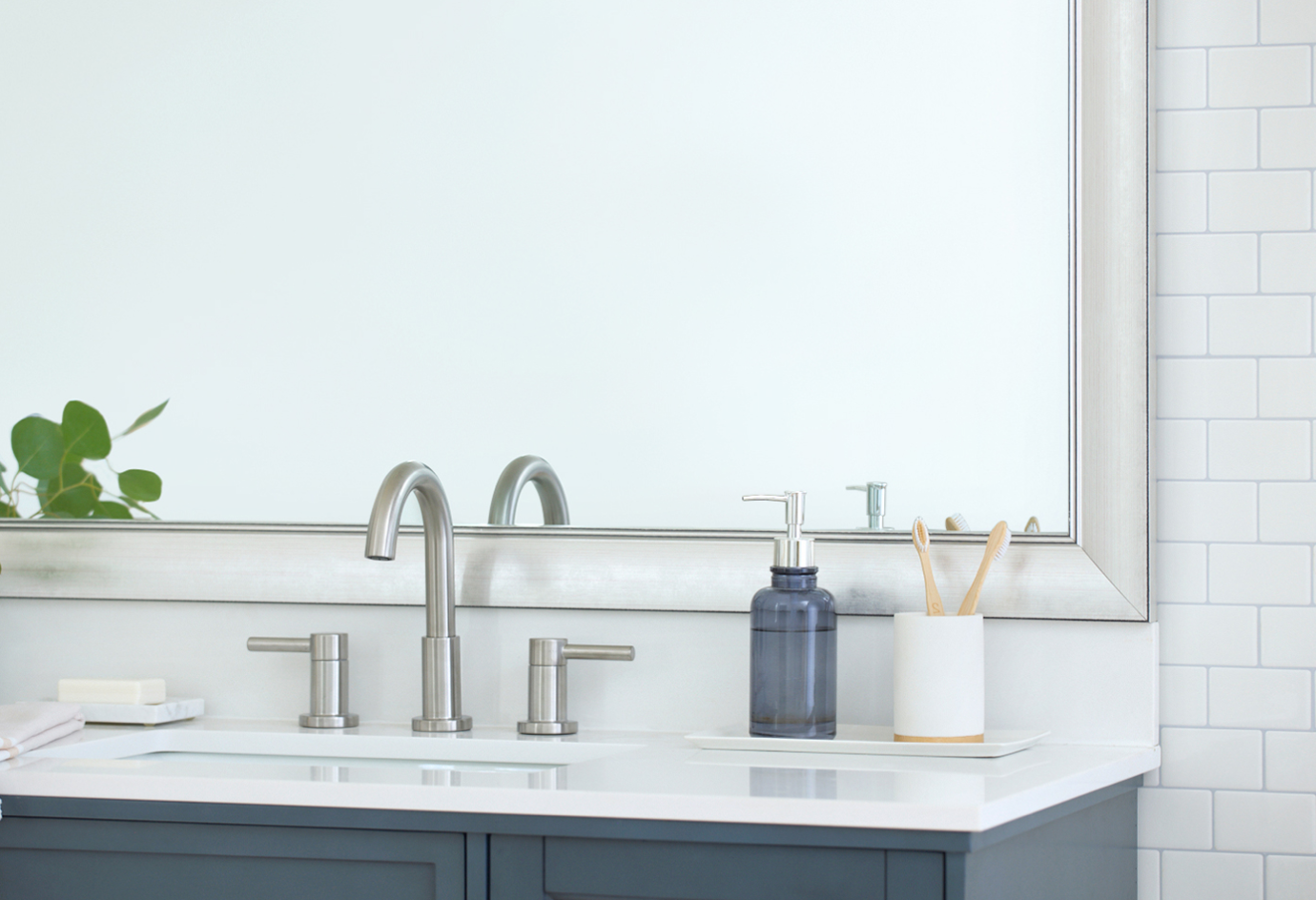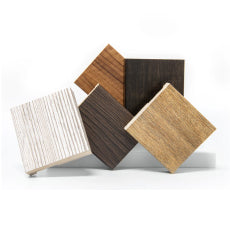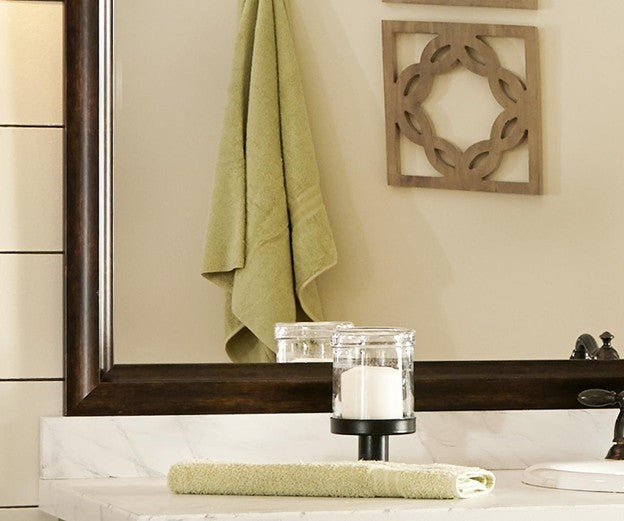Mirror Magic: Different Types of Mirrors and How to Use Them
Mirrors are so much more than just a simple tool to see your reflection. Mirrors have a bounty of applications—sometimes surprising ones.
In homes, mirrors can help enlarge the look of a room or enhance the lighting of a space. Or, they can be used decoratively as accent pieces on their own, especially when enhanced with a custom mirror frame. In commercial buildings, mirrors have been used to create impressive displays and optical illusions.
Inside cameras, mirrors allow photographers to see exactly what image will be captured when they look through the viewfinder. Curved mirrors inside reflecting telescopes gather and focus light from celestial objects, allowing us to explore the universe.

“Mirror, Mirror, on the Wall …”
Mirrors with magical qualities have been a feature of popular culture for centuries—from the ancient story of Narcissus, who fell in love with his own reflection, to Snow White’s evil queen, to the modern-day urban legend about conjuring up Bloody Mary in the mirror.
Types of Mirrors
Mirrors have a variety of uses; how they function depends on their construction. Read on to learn more.
Plane Mirrors
In its most basic form, a mirror is a flat piece of glass coated with a metal alloy, which allows the glass to reflect a clear image—this is called a plane mirror. Plane mirrors are the most common type and are found in bathrooms, bedrooms, and department store dressing rooms.
A plane mirror produces images that are identical or near identical in shape and size to objects (and people) placed in front of it, with one caveat: The reflections are laterally inverted—it’s why when you hold your right hand up in front of a mirror, for example, it looks like the left hand of your reflected image.
Spherical Mirrors
If you’ve ever been inside a mirror funhouse, you’ve seen the two types of spherical mirrors: convex and concave. You might be surprised to learn how common these mirrors are in everyday life.
- Convex Mirrors: A convex mirror bulges outward and displays a slightly distorted image that is smaller than the actual It does this by reflecting at a wider angle near the edges than at the center. Convex mirrors are very useful for safety purposes since they allow you to see more than a plane mirror—passenger-side mirrors in cars are a common example. Crafty marketers have also figured out that using curved mirrors in clothing store dressing rooms can boost sales by making shoppers appear longer and leaner.
- Concave Mirrors: Also known as a converging mirror, a concave mirror curves inward like a spoon. Concave mirrors reflect light inward to a single focal point; this is why they’re typically used to focus light. From far away, images reflected in a concave mirror seem upside down, but, as you get closer, the image flips and becomes magnified. Concave mirrors are used by dentists to magnify the size of teeth, in car headlights, in shaving and makeup mirrors, and even to light the Olympic torch.
Non-Reversing Mirrors
Also known as a flip mirror or a true mirror, a non-reversing mirror allows you to see something, including yourself, as if you were looking directly at it. We won’t lie—it’s kind of eerie waving your right hand in the mirror and seeing your image reflect your actual movement. Want cheap entertainment? Buy a non-reversing mirror or make your own at home, invite your friends over, and watch them freak out.

Two-Way Mirrors
You’ve seen it on your favorite crime-drama shows—the two-way mirror. It’s essentially just a see-through panel of glass on one side and a mirror on the other. The one-way visual transmission is achieved by brightly lighting one side of the mirror and keeping the other side dark; you can see through the glass from the darkened side.
Uses for Mirrors
Now that you’ve learned more about the different types of mirrors, you want to know how to get the most out of them. Mirrors are both functional and decorative. Use them to:
- Enhance natural light: Place a large mirror directly across from a window to bring additional light into the room; the mirror will reflect incoming light and naturally make the room feel brighter.
- Create the feel of a larger room: A floor-to-ceiling mirror or large wall mirrors placed around the room give the illusion of a larger space.
- Accentuate furniture or a room feature: Hang a mirror above the mantle, a sofa, or another feature you want to highlight, which will naturally draw the eye to that spot.
- Add flair: A backsplash of mirrored tiles in the kitchen or bathroom adds sparkle and reflects colors in the room.
Different Mirror Styles
- Freestanding Full-Length Mirrors: An indispensable item for bedrooms and fitting rooms everywhere, full-length mirrors are portable and quick and easy to set up.
- Wall Mirrors: Hanging mirrors come in a virtually unlimited number of shapes, sizes, and styles, from ornate to understated. They often have heavier, solid wood frames, which can make them a challenge to hang; thankfully, there are plenty of hanging options, from heavy-duty wire to French cleats. Here’s a helpful tutorial on hanging a heavy mirror.
- Mounted Mirrors: Mounted mirrors are common in bathrooms and living spaces. Residential construction companies often choose basic, frameless sheet-glass mirrors, which, while functional and economical, lack style. Thankfully, it’s possible to install a custom decorative mirror frame on a mounted mirror without having to replace the existing mirror or even remove it from the wall.
- Over-the-Door Mirrors: Ideal where space is limited, over-the-door mirrors are typically inexpensive and easy-to-install.
- Custom-designed mirrored tabletop: If the surface of your coffee table, end tables, or another table is scratched or dinged, consider giving it a facelift with a mirrored glass top customized to fit your furniture. It’s a relatively affordable and aesthetically pleasing way to salvage furniture that needs some TLC.

Ready to Transform a Mirror from Drab to Fab?
MirrorMate has developed an ingenious solution to a common problem: boring, frameless wall-mounted mirrors. Commercial home developers routinely install plain, unframed mirrors in bathrooms and other living spaces because it’s economical, yet these bare mirrors look unfinished.
Most homeowners would love to give their boring mirrors a makeover—but removing and framing large mirrors can be expensive and time-consuming.
MirrorMate has developed a cost-effective DIY solution to this problem guaranteed to work. Our custom mirror frames account for anything and everything—they will fit all square and rectangular mirrors in any room or situation.
In three easy steps, our DIY bathroom mirror frames will help you transform the look of your space.
- Select a frame from our catalog of 65+ styles.
- Measure the dimensions of your mirror and place your order.
- Install the pre-taped frame onto your mirror and enjoy!
Check out our catalog of custom decorative mirror frames, view our before and after pictures for inspiration, and get started on your project today!

Choose from 65+ styles
This is a common question and there are so many finishes from silvers to brass.





